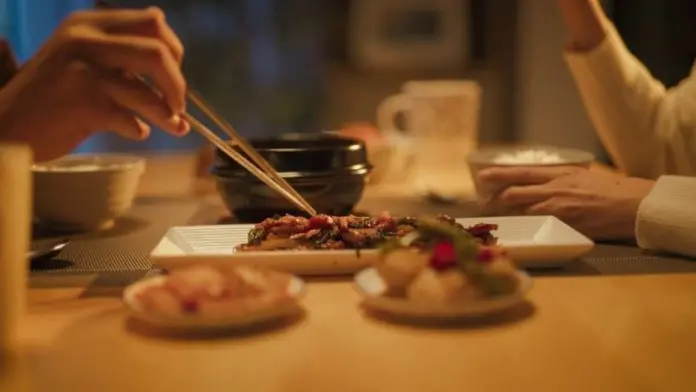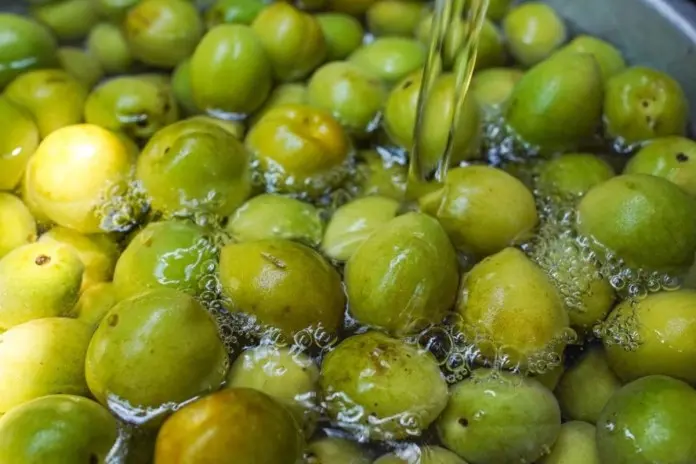Korea’s Secret Weapon: Pickled Green Plums
When the summer heat hits, your appetite is often the first to disappear. Every meal starts to feel heavy, and even your favorite dishes taste dull. But there’s one seasonal side dish that can revive your taste buds with just a single bite — maesil jangajji, or Korean pickled green plums.
These glossy green fruits appear briefly in June, their short harvest window making them one of Korea’s most anticipated summer ingredients. When firm and plump, they’re perfect for pickling — a yearly tradition in many Korean homes.

🌿 Choosing and Prepping the Perfect Plums
The key to good maesil jangajji starts with choosing high-quality plums. Look for fruit that’s evenly colored, free from blemishes or bruises, and firm to the touch — but not rock hard.
After purchase, rinse the plums thoroughly under running water to remove dirt and pesticide residue. Then use a toothpick or knife to carefully remove the stems. Lay them out in a basket and dry completely in the shade for about a day. Any leftover moisture can cause mold during fermentation, so patience here is crucial.
🧂 Salt, Patience, and Flavor
The first stage of pickling involves salting. A common ratio is 1 kg of plums to 200–250 g of coarse salt. In a sterilized glass jar, alternate layers of plums and salt — making sure to finish with a top layer of salt to prevent mold growth.
Let the jar sit at room temperature for 3 to 4 weeks. During this time, the plums will release juice, creating a flavorful brine. This liquid can be strained and saved as a savory maesil soy sauce base. Meanwhile, the salted plums should be soaked in clean water for a day to remove excess salt, then air-dried in a well-ventilated space.
Some recipes call for re-pickling the plums in a mixture of soy sauce, vinegar, and sugar — often in a 2:1:1 ratio. Garlic or chili peppers can be added for an extra kick.

🍚 From Side Dish to Secret Ingredient
Once properly aged, maesil jangajji becomes a powerful side dish — salty, tangy, and packed with flavor. It’s the kind of food that can turn a bowl of plain rice into a full meal, especially in hot weather when your appetite is low.
Chopped finely, it can be added to salads or cold noodle dishes. It pairs beautifully with grilled meats, and even enhances broths and sauces with a subtle umami kick. The more it’s aged, the deeper and smoother the flavor becomes — never overwhelming, always satisfying.
In short? It’s not just a pickle — it’s a pantry powerhouse.
And if you want to make it, the time is now. Come July, fresh green plums are gone until next year.
Get the latest on K-pop & K-drama here!
게시물 It Looks Like a Fruit — But It’s Korea’s Favorite Rice Thief이 WIKIPOP에 처음 등장했습니다.
